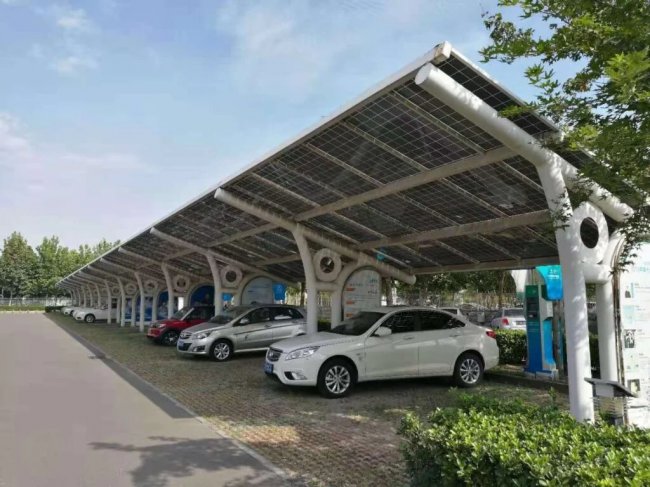Advances In Sustainable Synthesis: Pioneering Green Pathways For Molecular Construction
The paradigm of chemical synthesis is undergoing a profound transformation, driven by the urgent need to align industrial and academic practices with the principles of green chemistry. Sustainable synthesis, the design of chemical products and processes that minimize the use and generation of hazardous substances, has evolved from a niche concept to a central pillar of modern research. Recent breakthroughs in catalysis, renewable feedstocks, and innovative activation methods are redefining what is possible, offering a roadmap toward a more environmentally responsible chemical enterprise.
A cornerstone of sustainable synthesis is the development of novel catalytic systems that maximize efficiency and minimize waste. Photoredox catalysis continues to be a powerhouse, enabling previously inaccessible transformations under mild conditions using visible light as a renewable energy source. A significant leap forward has been the merger of photoredox with transition metal catalysis, creating powerful synergistic systems. For instance, MacMillan and colleagues have demonstrated dual nickel/photoredox catalytic cycles that facilitate decarboxylative cross-couplings, allowing the construction of C(sp2)–C(sp3) bonds from abundant carboxylic acids, bypassing traditional organohalide precursors (L.-M. Sun et al.,Science2023, 379, 6632). This eliminates stoichiometric metallic waste and operates at room temperature, drastically reducing energy consumption.
Parallel advancements in electrocatalysis are unlocking synthetic routes driven by electrons, the ultimate green reagent. Electroorganic synthesis avoids the use of harsh chemical oxidants and reductants, instead using electric current to drive selective transformations. Recent work by Baran et al. has showcased scalable electrochemical C–H functionalization of complex molecules, a strategy that is being adopted in pharmaceutical manufacturing to shorten synthetic routes and improve atom economy (S. Kawamata et al.,Nature2023, 614, 6949). The emergence of predictable electrocatalysis, guided by computational modeling, is moving this field from serendipitous discovery to rational design.
The shift from petrochemicals to biomass-derived platform molecules as primary building blocks represents another critical frontier. The challenge lies in defunctionalizing these oxygen-rich substrates selectively. Here, catalyst design is paramount. Researchers have made remarkable progress with multifunctional heterogeneous catalysts, such as single-atom alloys (SAAs) and engineered zeolites, which can selectively cleave C–O bonds in lignin-derived aromatics without excessive hydrogenation (Y. Wang et al.,Nat. Catal.2023, 6, 185). This allows for the production of drop-in aromatic chemicals from wood, a completely renewable resource. Similarly, the catalytic upgrading of sugars and glycerol to valuable diacids, polymers, and solvents is nearing commercial viability, promising to decouple chemical production from fossil fuels.
Solvent use constitutes a major portion of chemical waste. The field is therefore aggressively pursuing alternatives to volatile organic compounds (VOCs). The application of non-conventional media has seen exciting progress. Supercritical carbon dioxide (scCO2), ionic liquids, and deep eutectic solvents (DESs) are no longer mere curiosities but are being optimized for specific reaction classes. A notable development is the design of switchable hydrophilicity solvents (SHS), which can change their solubility properties upon the addition or removal of CO2, enabling facile product separation and near-quantitative solvent recovery (P. G. Jessop et al.,Green Chem.2023, 25, 2107). Furthermore, mechanochemical synthesis—using ball milling to conduct reactions in the solid state—has exploded in popularity. This solvent-free approach not only eliminates solvent waste but also often provides unique reactivity and access to novel polymorphs, as demonstrated in the synthesis of pharmaceutical cocrystals and metal-organic frameworks (MOFs) (T. Friščić et al.,Nat. Rev. Chem.2023, 7, 3).
The integration of artificial intelligence and automation is poised to accelerate sustainable discovery. Machine learning algorithms are now being trained to predict reaction outcomes, optimize conditions for maximum energy and atom efficiency, and even propose novel retrosynthetic pathways that prioritize green metrics like the E-factor. Self-optimizing robotic flow reactors can rapidly screen thousands of catalytic and reaction parameters, identifying the most sustainable synthesis route in a fraction of the time required by human researchers (A. Aspuru-Guzik et al.,Nature2023, 617, 497). This data-driven approach is essential for systematically embedding sustainability into the core of synthetic design.
Looking to the future, the trajectory of sustainable synthesis points toward increasingly integrated and holistic systems. The concept of "circular synthesis" will gain prominence, where waste streams from one process are designed as inputs for another, creating closed-loop systems with near-zero emissions. The direct utilization of captured CO2 as a C1 synthon, powered by renewable electricity, is a major long-term goal, with research focused on developing more efficient and selective catalysts for its transformation into fuels and polymers. Furthermore, the adoption of holistic life-cycle assessment (LCA) will become standard practice, ensuring that new synthetic methods are evaluated not just on isolated metrics but on their total environmental impact from cradle to grave.
In conclusion, sustainable synthesis is no longer an aspirational goal but a dynamic and rapidly advancing field. Through continuous innovation in catalysis, solvent design, and digitalization, chemistry is being reinvented to operate in harmony with planetary boundaries. These advances are forging a new era where efficiency, selectivity, and environmental stewardship are inextricably linked, paving the way for a truly sustainable chemical industry.
Customized/OEM/ODM Service
HomSolar Supports Lifepo4 battery pack customization/OEM/ODM service, welcome to contact us and tell us your needs.


HomSolar: Your One-stop LiFePO4 Battery Pack & ESS Solution Manufacturer
Our line of LiFePO4 (LFP) batteries offer a solution to demanding applications that require a lighter weight, longer life, and higher capacity battery. Features include advanced battery management systems (BMS), Bluetooth® communication and active intelligent monitoring.

Customised Lithium Iron Phosphate Battery Casing
ABS plastic housing, aluminium housing, stainless steel housing and iron housing are available, and can also be designed and customised according to your needs.

HomSolar Smart BMS
Intelligent Battery Management System for HomSolar Energy Storage System. Bluetooth, temperature sensor, LCD display, CAN interface, UART interface also available.


Terminals & Plugs Can Be Customized
A wide range of terminals and plugs can be customised to suit the application needs of your battery products.

Well-designed Solutions for Energy Storage Systems
We will design the perfect energy storage system solution according to your needs, so that you can easily solve the specific industry applications of battery products.



About Our Battery Cells
Our energy storage system products use brand new grade A LiFePO4 cells with a battery lifespan of more than 4,000 charge/discharge cycles.



Applications in Different Industries
We supply customized & OEM battery pack, assemble cells with wiring, fuse and plastic cover, all the cell wires connected to PCB plug or built BMS.
Applications: E-bike, Electric Scooter, Golf Carts, RV, Electric Wheelchair, Electric Tools, Robot Cleaner, Robot Sweeper, Solar Energy Storage System, Emergency Light, Solar Power Light, Medical Equipment, UPS Backup Power Supply.
We can provide you with customized services. We have the ability to provide a vertical supply chain, from single cells to pack/module and to a complete power solution with BMS, etc.


HomSolar (Shenzhen) Technology Co., Ltd
























